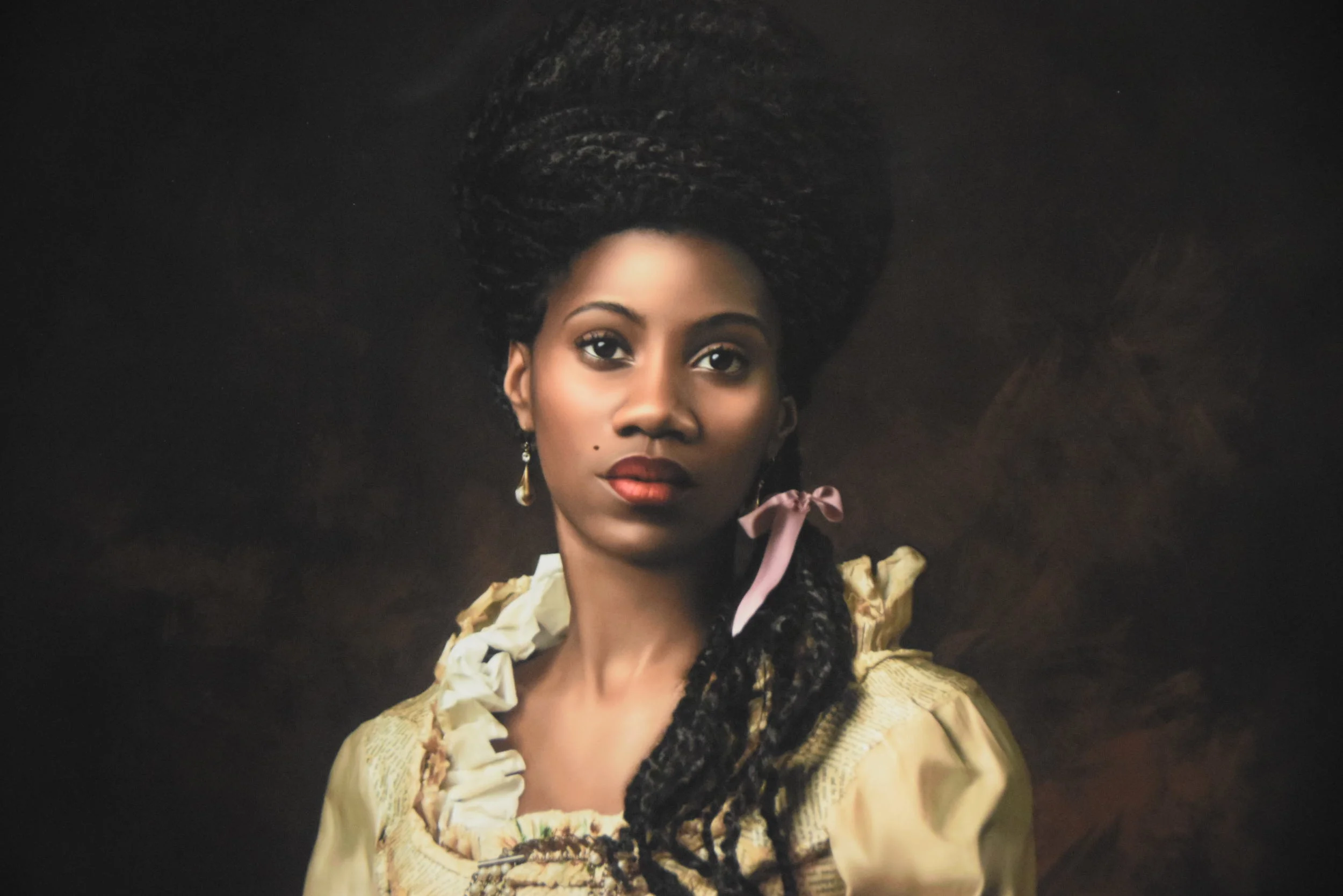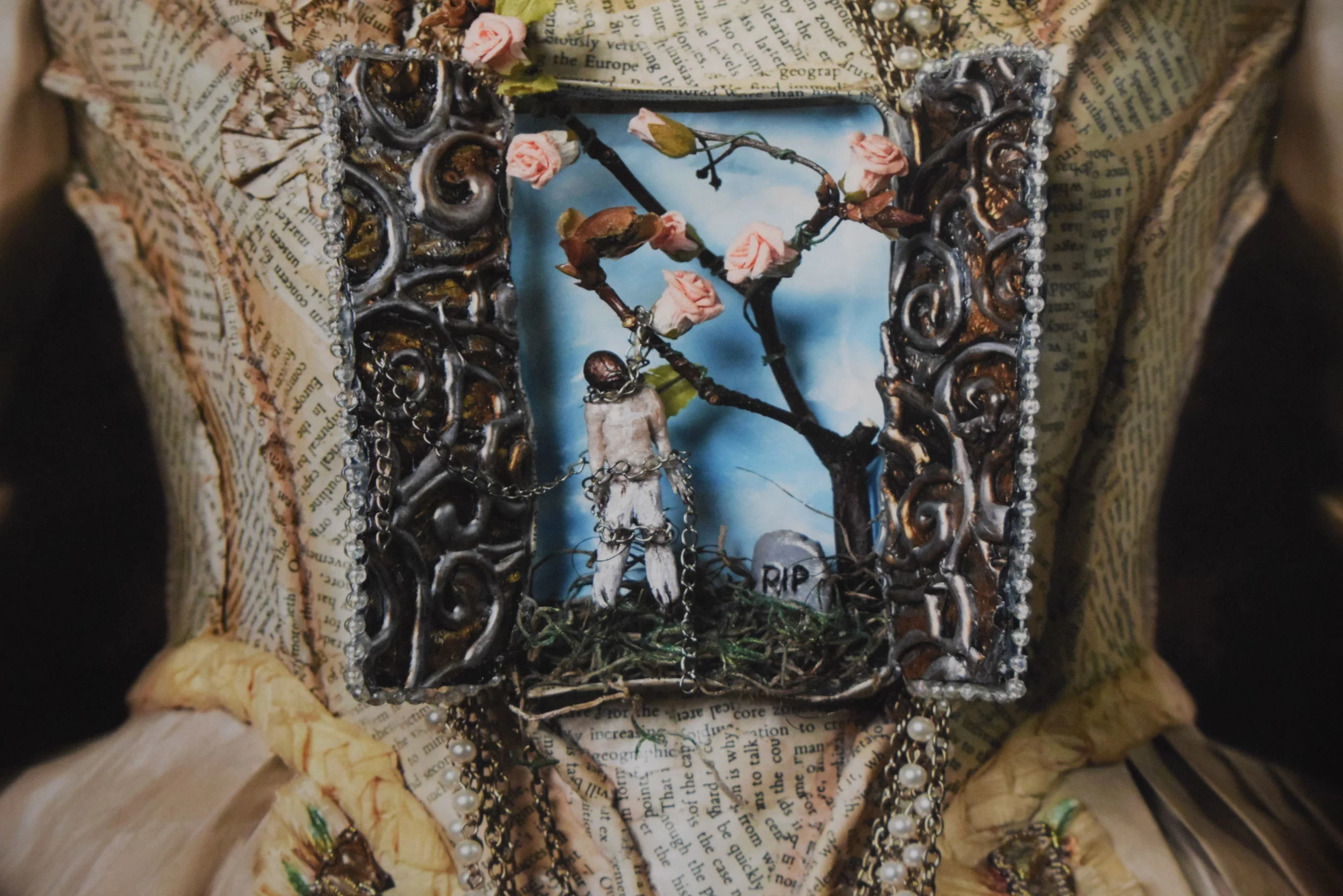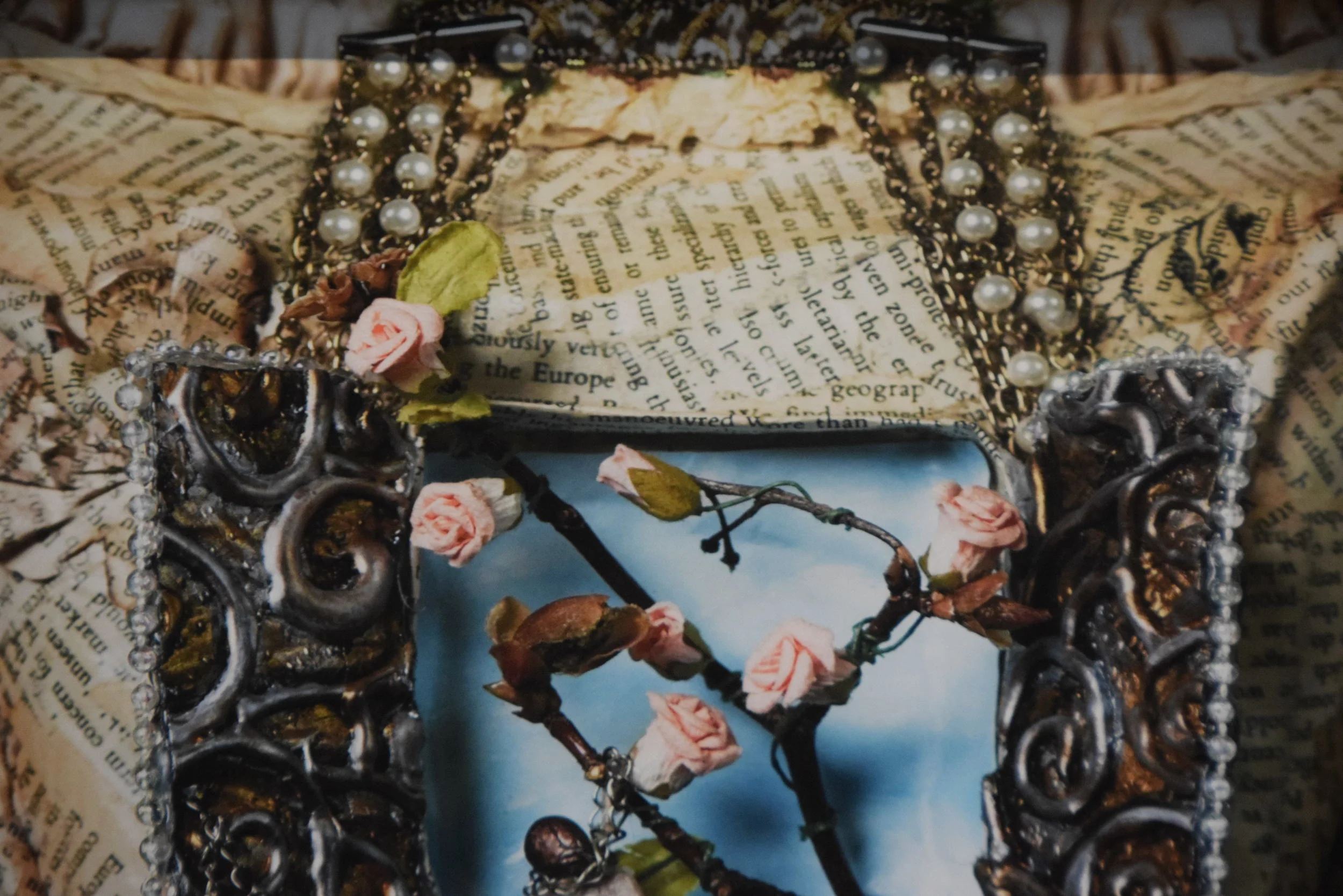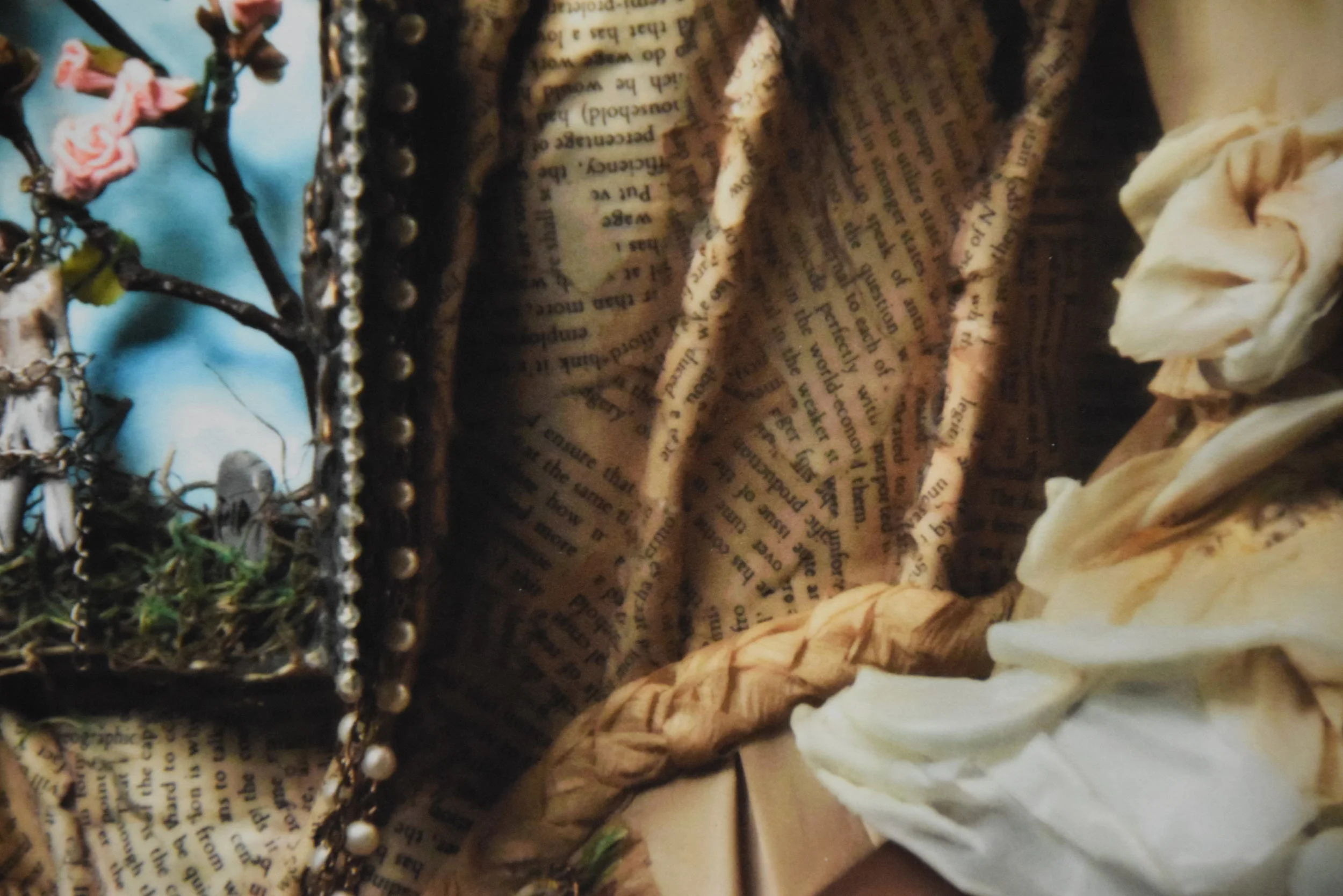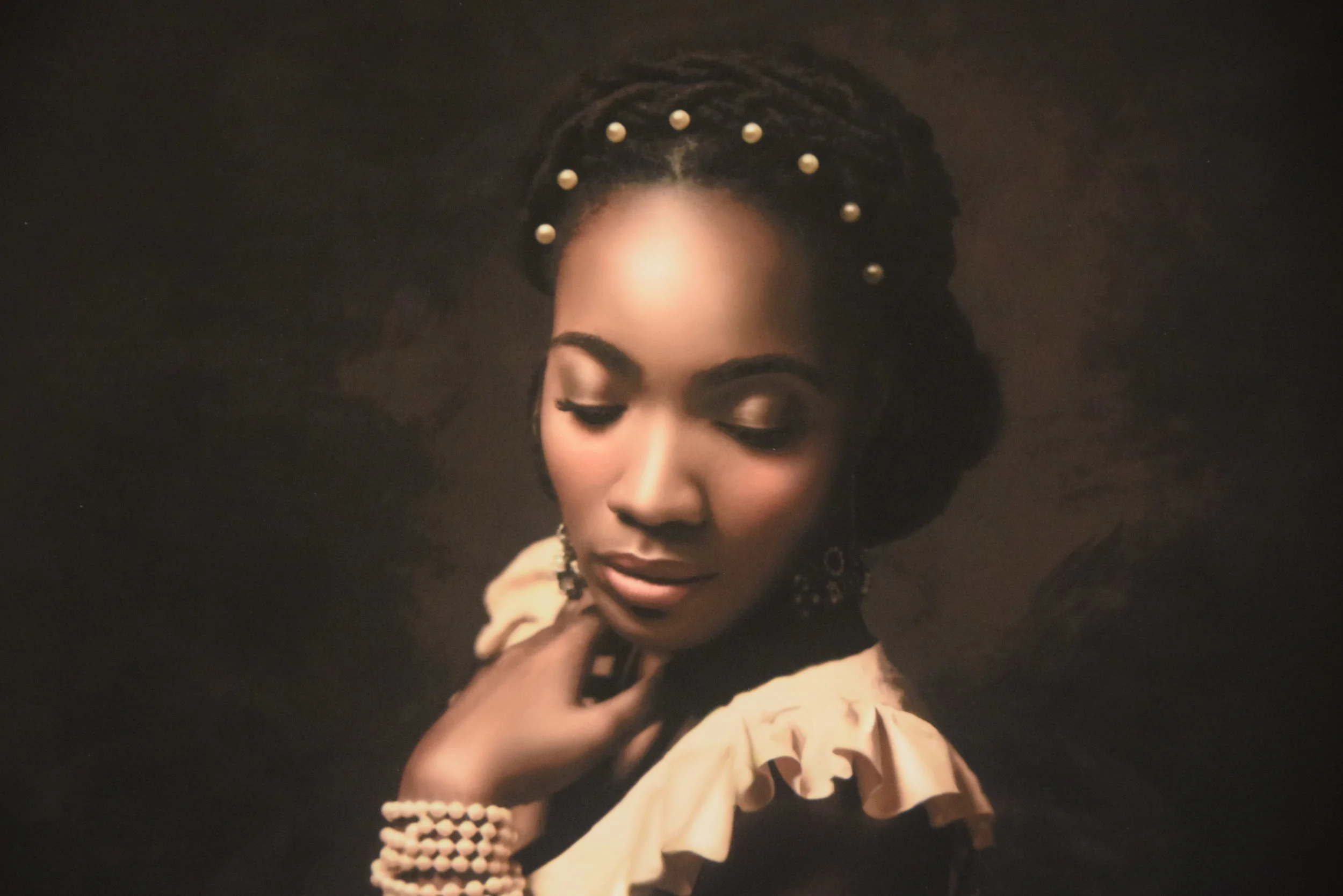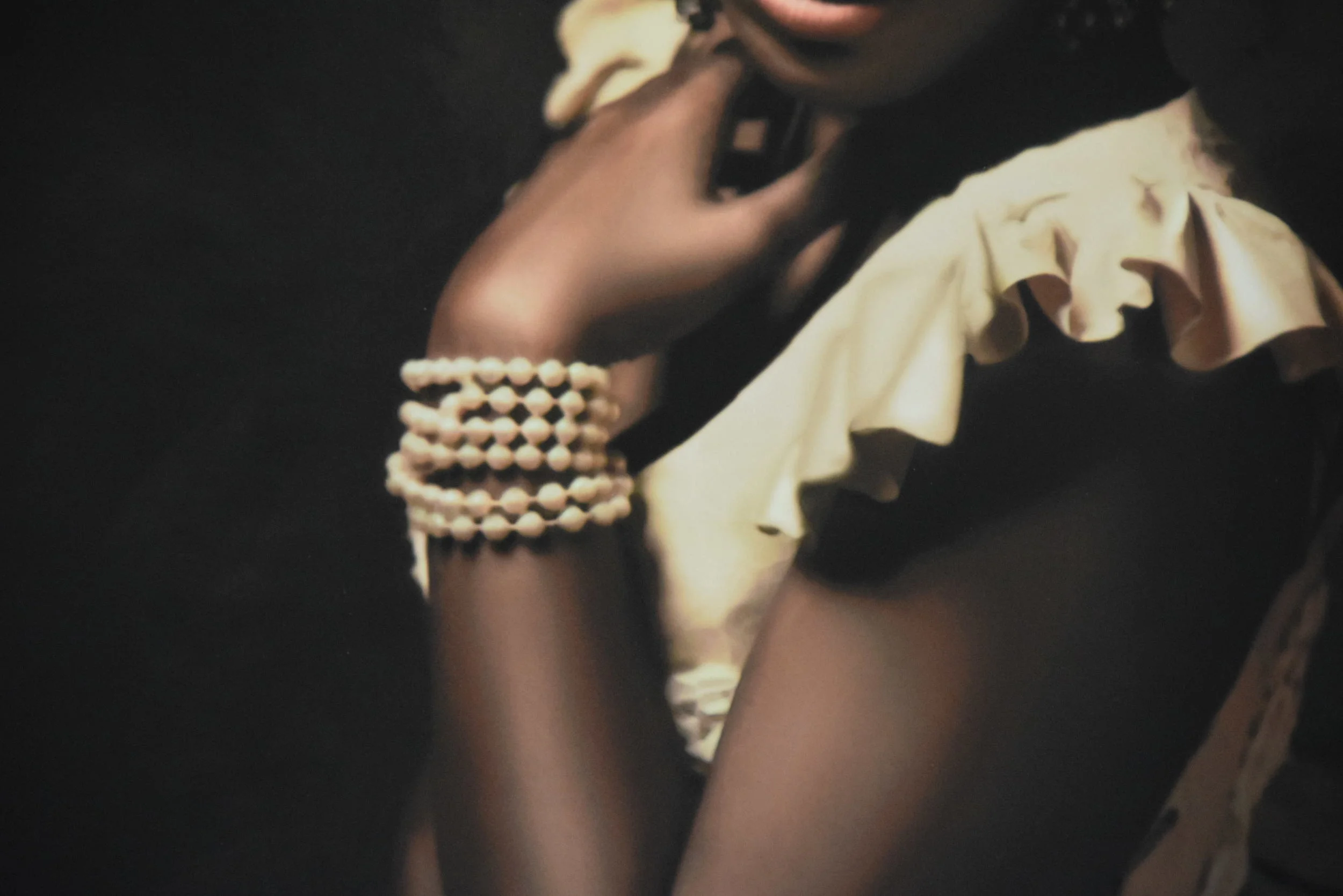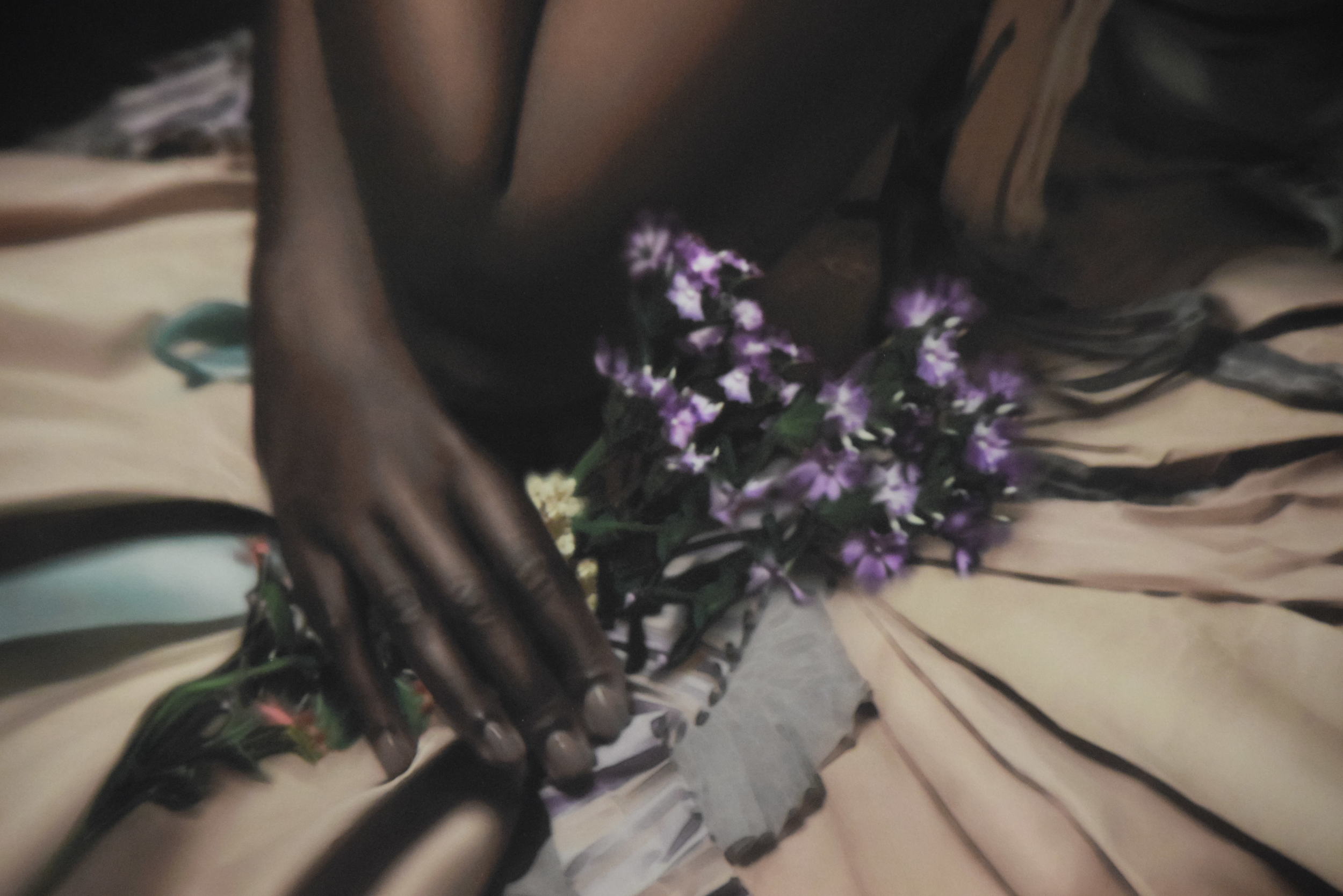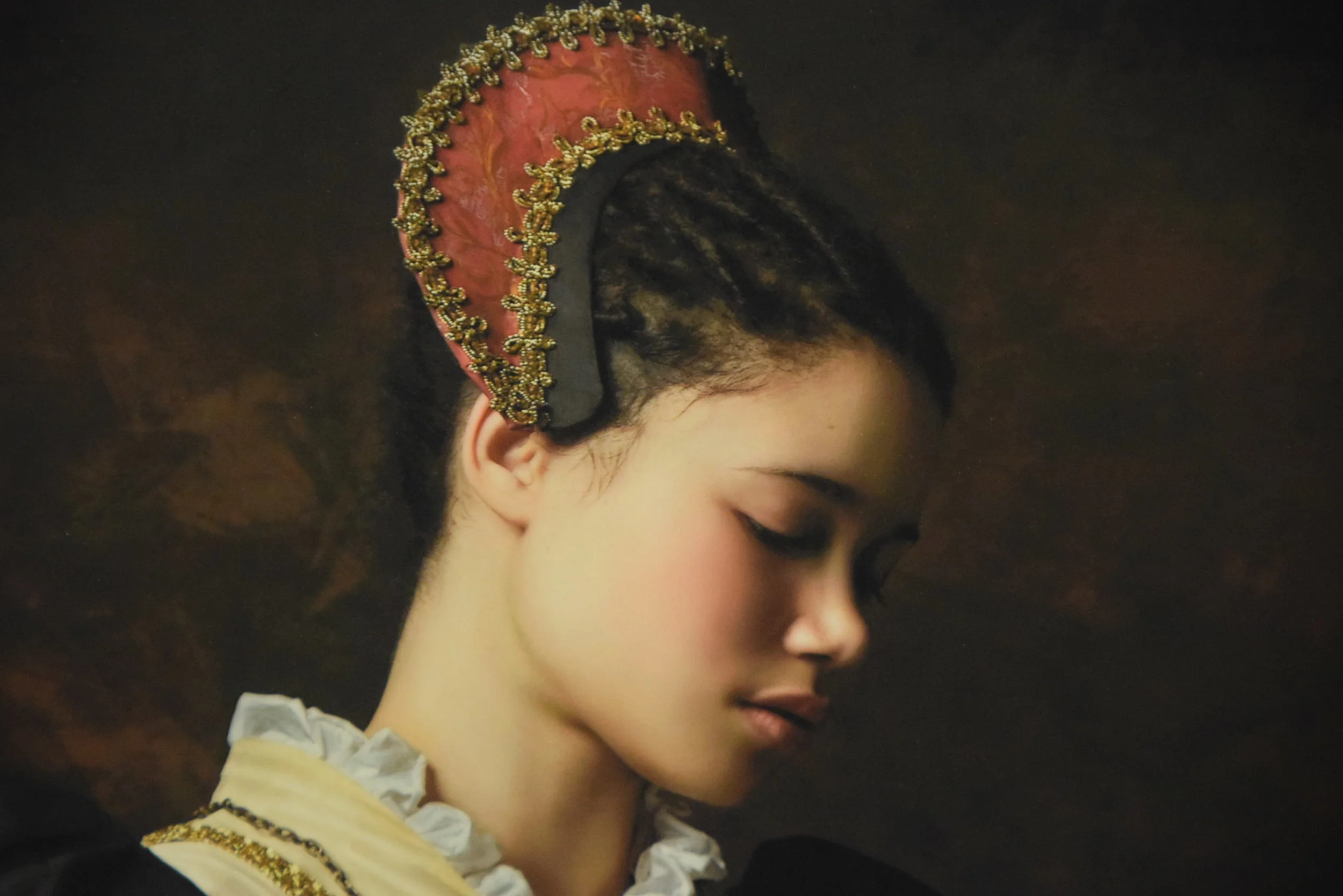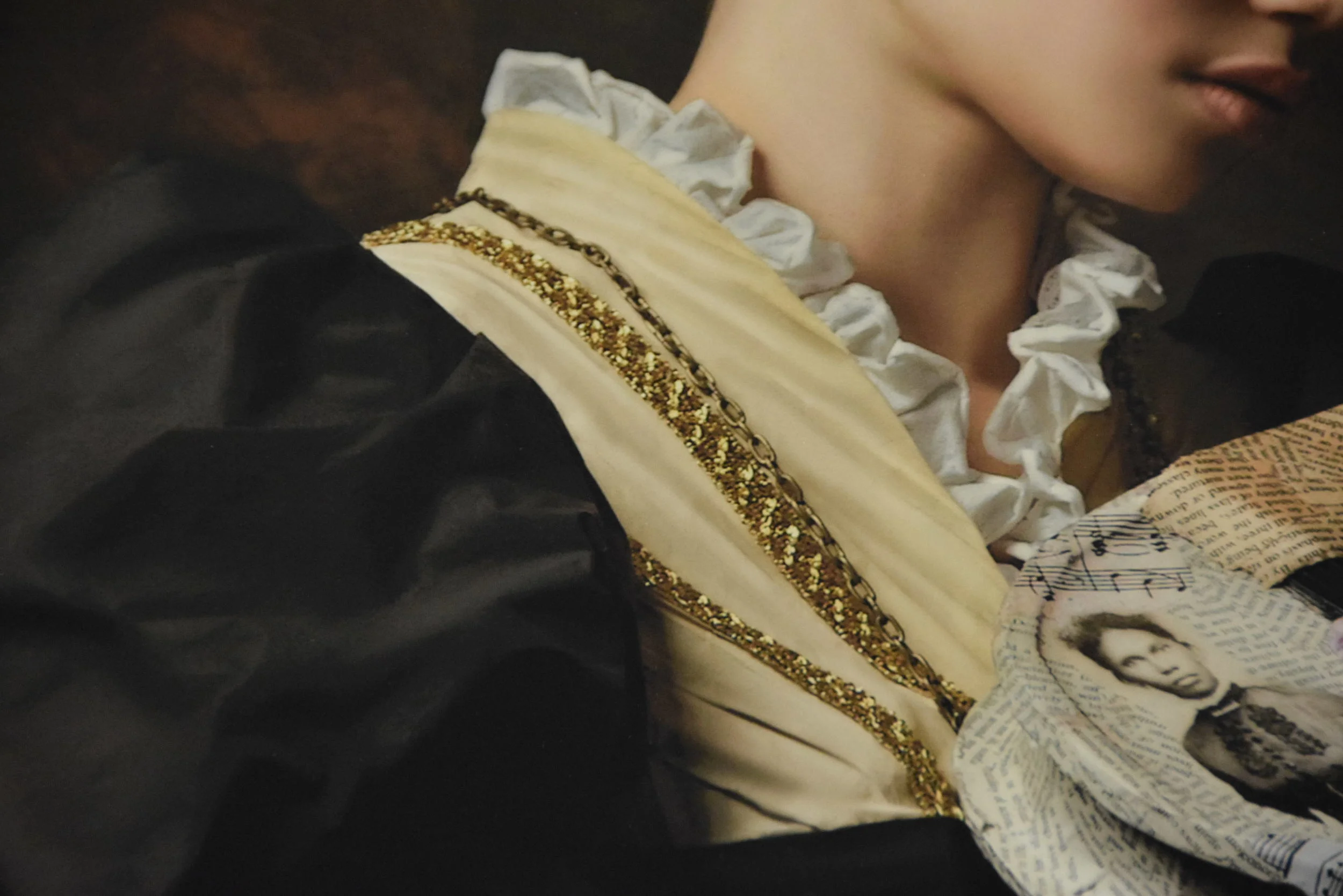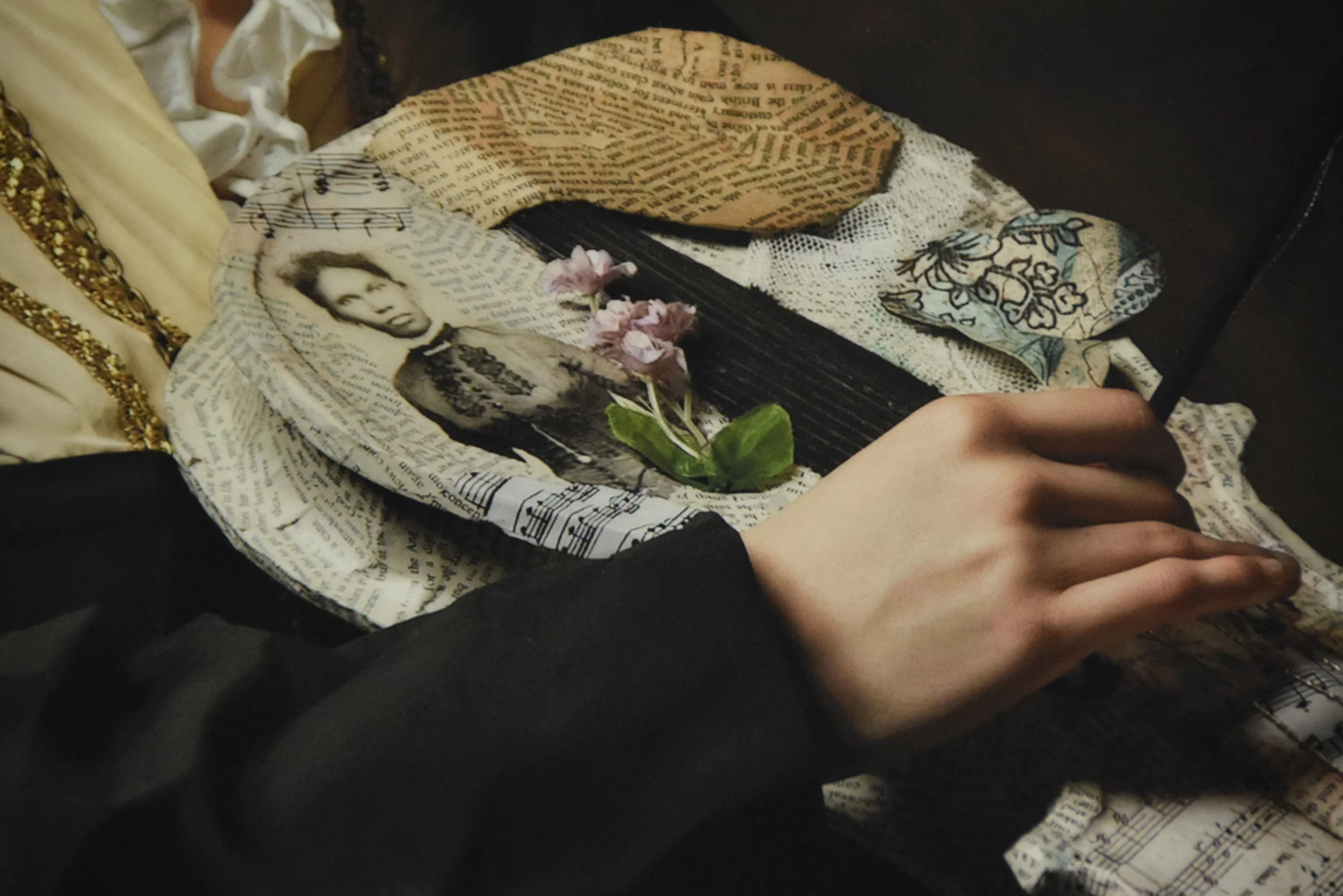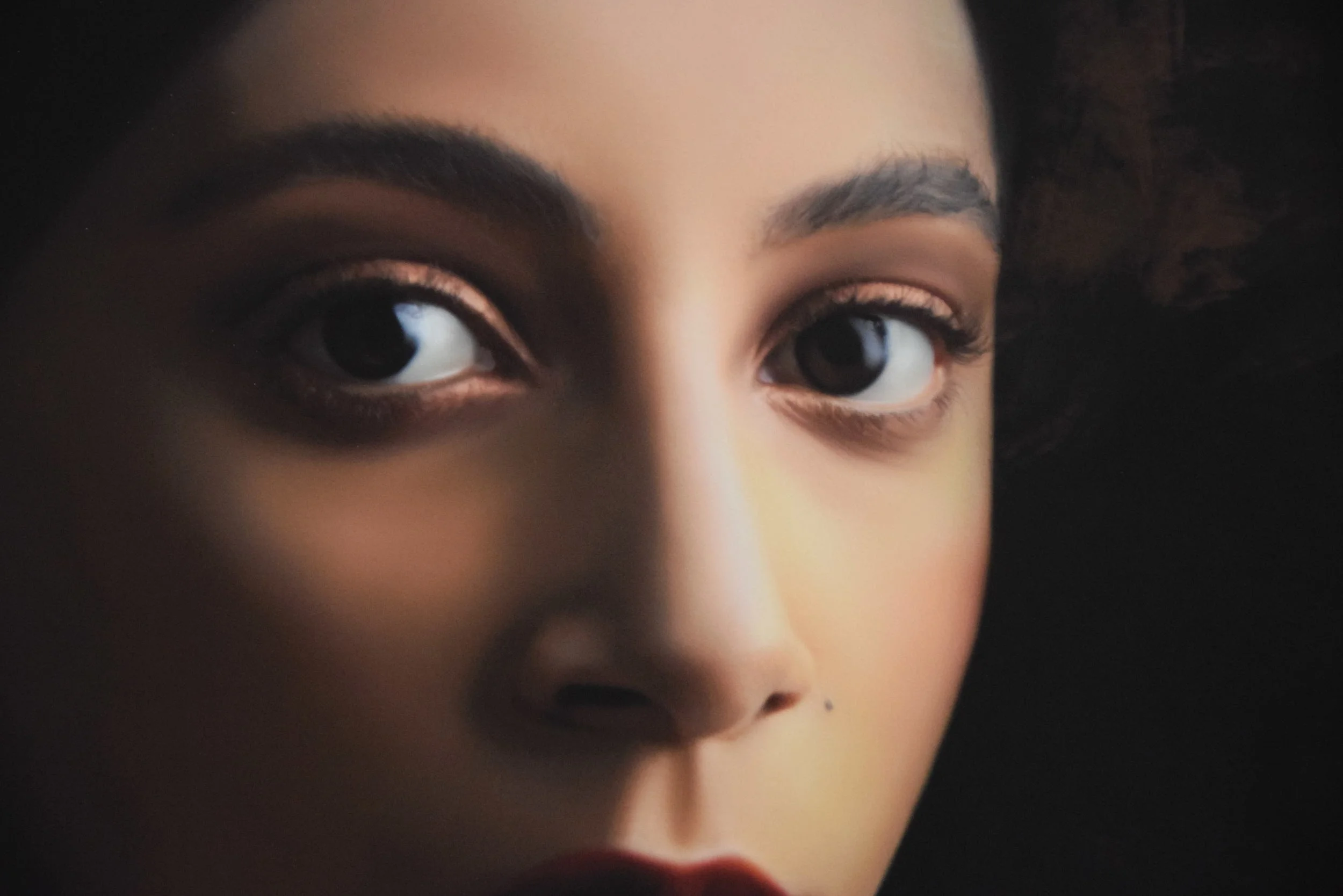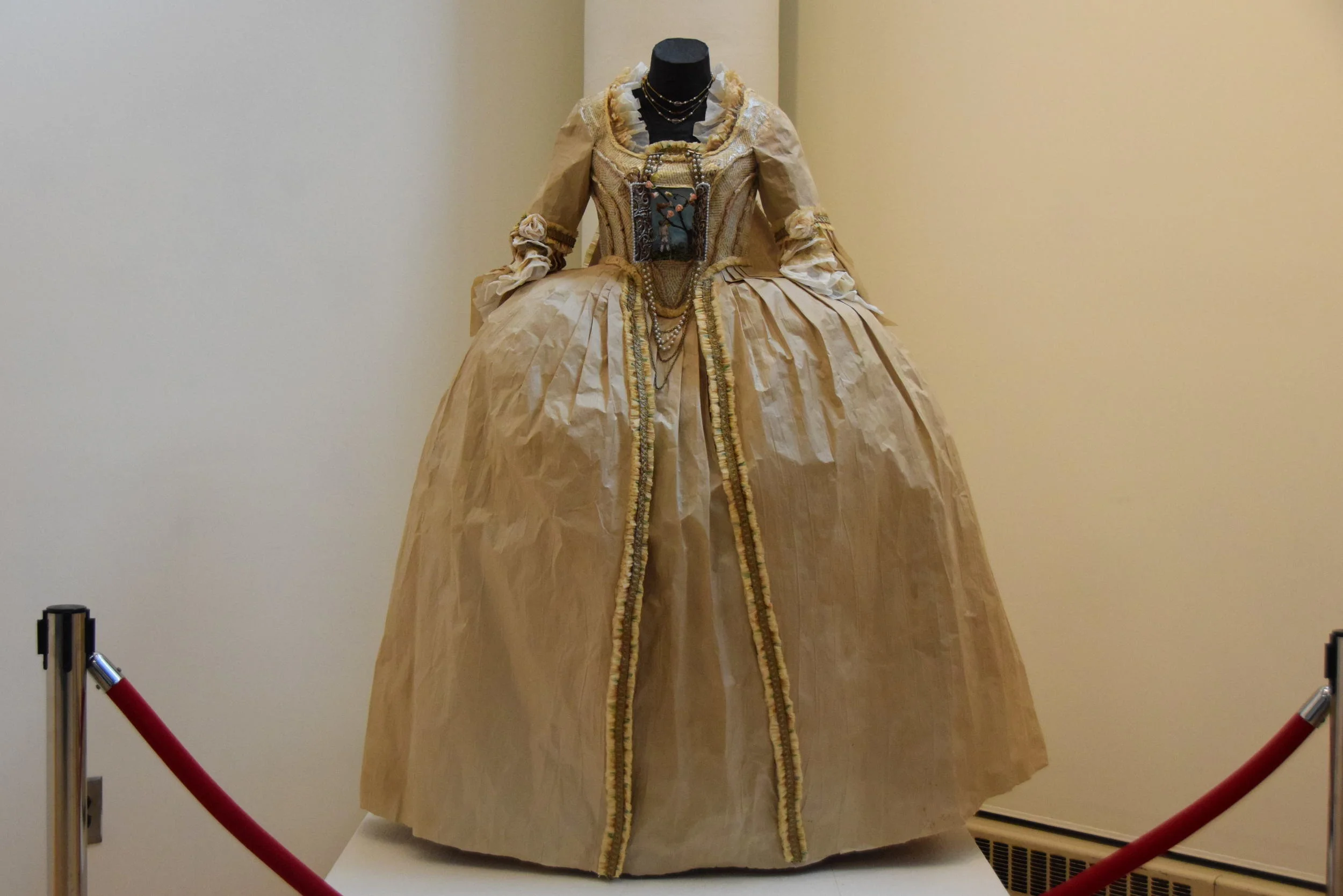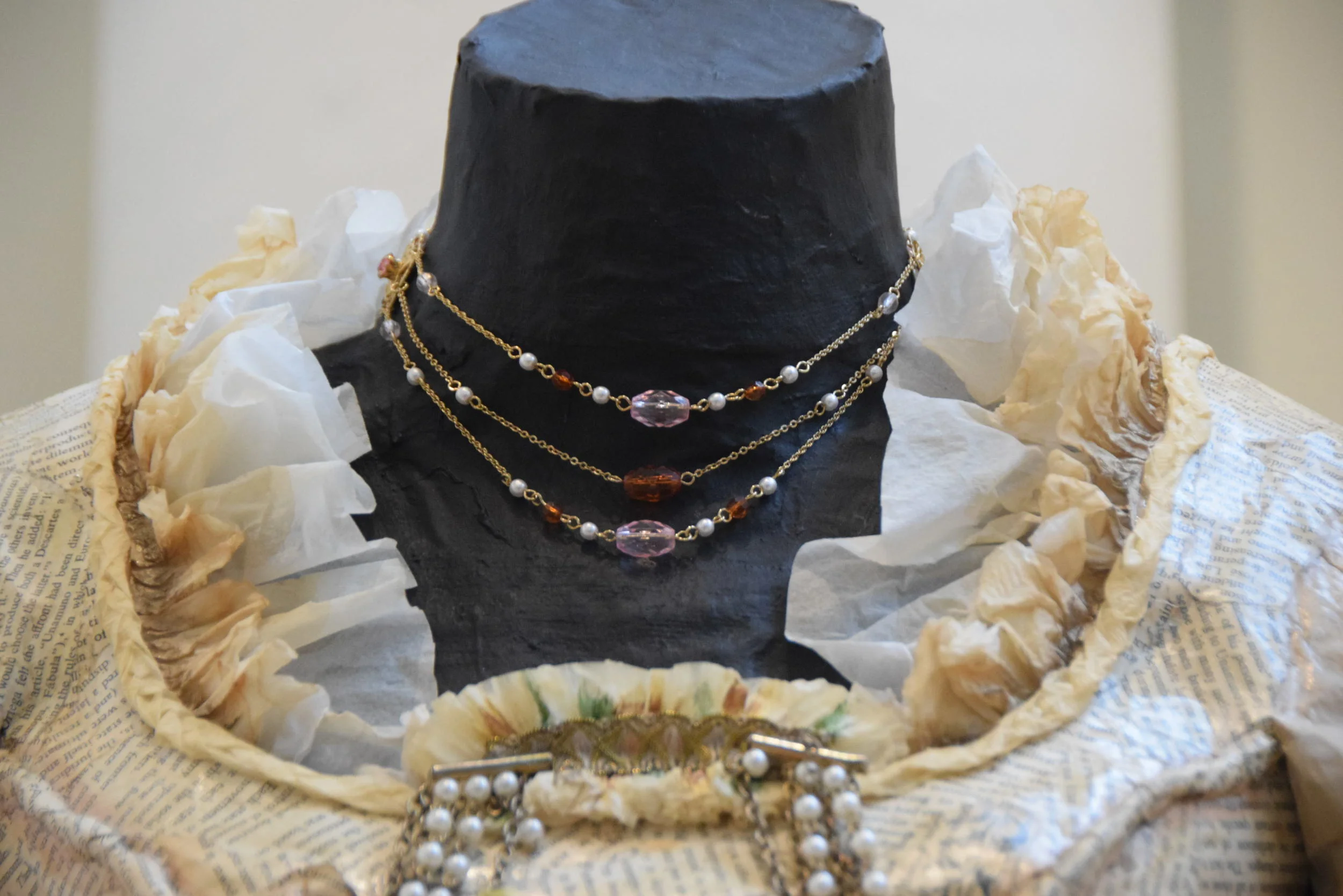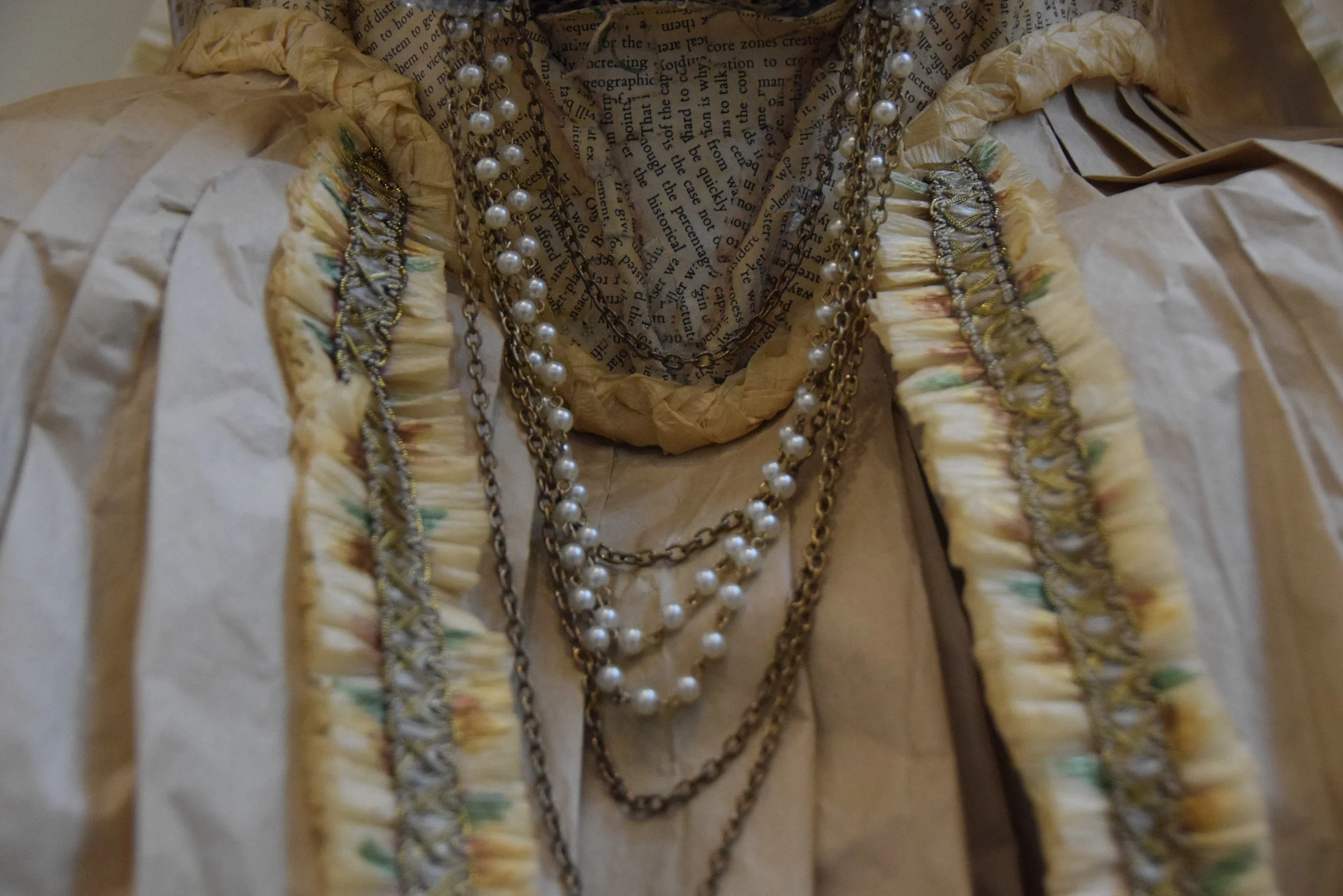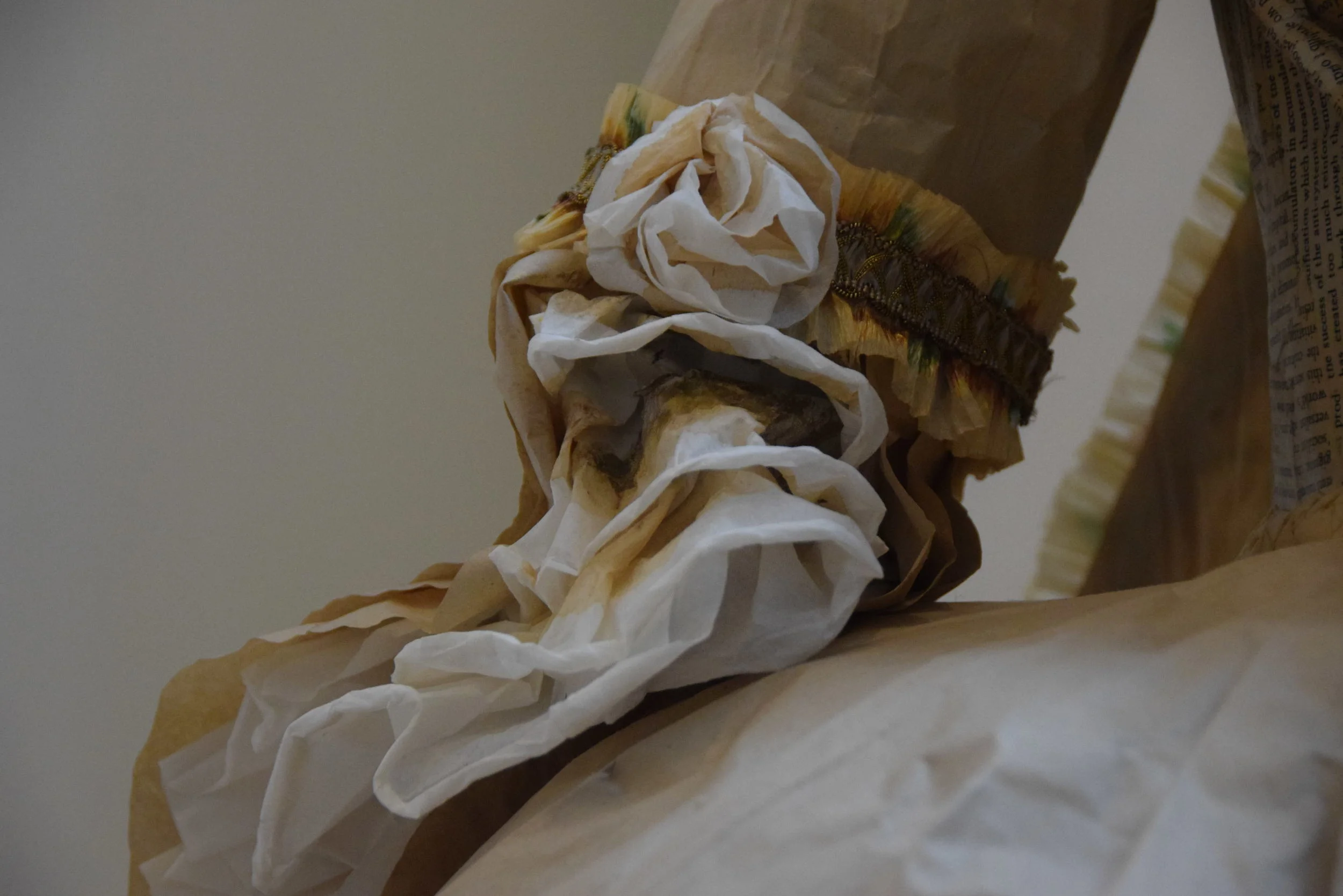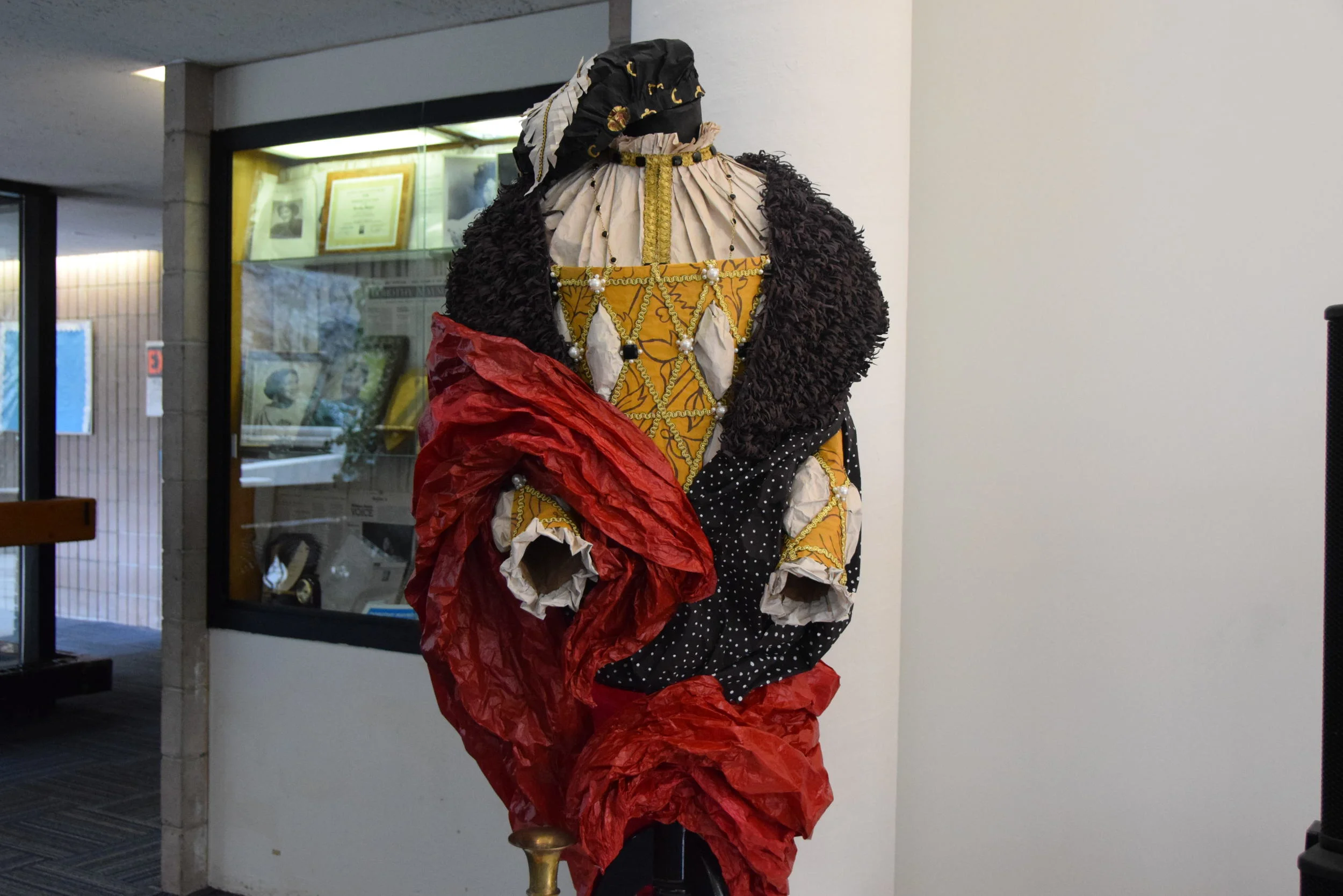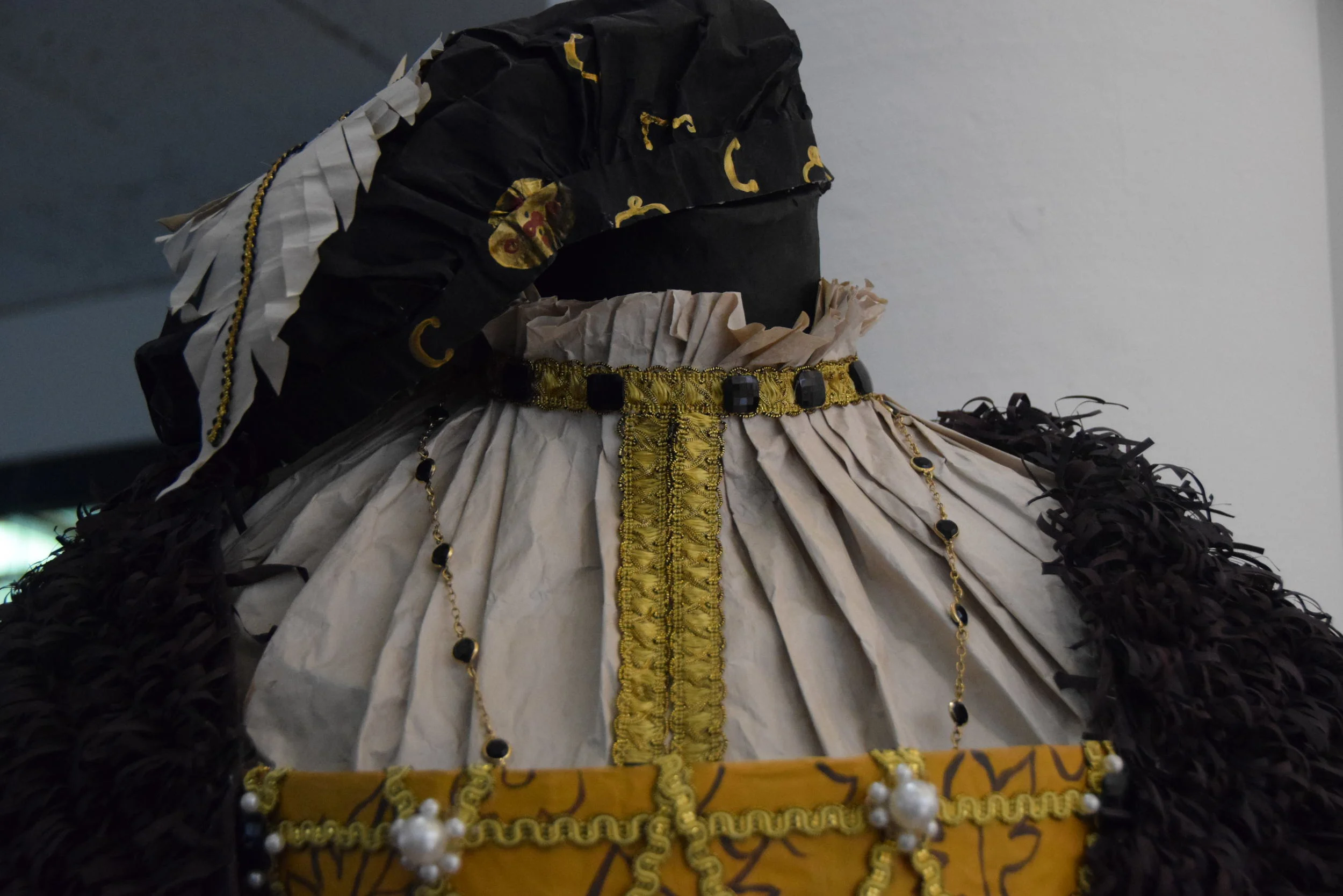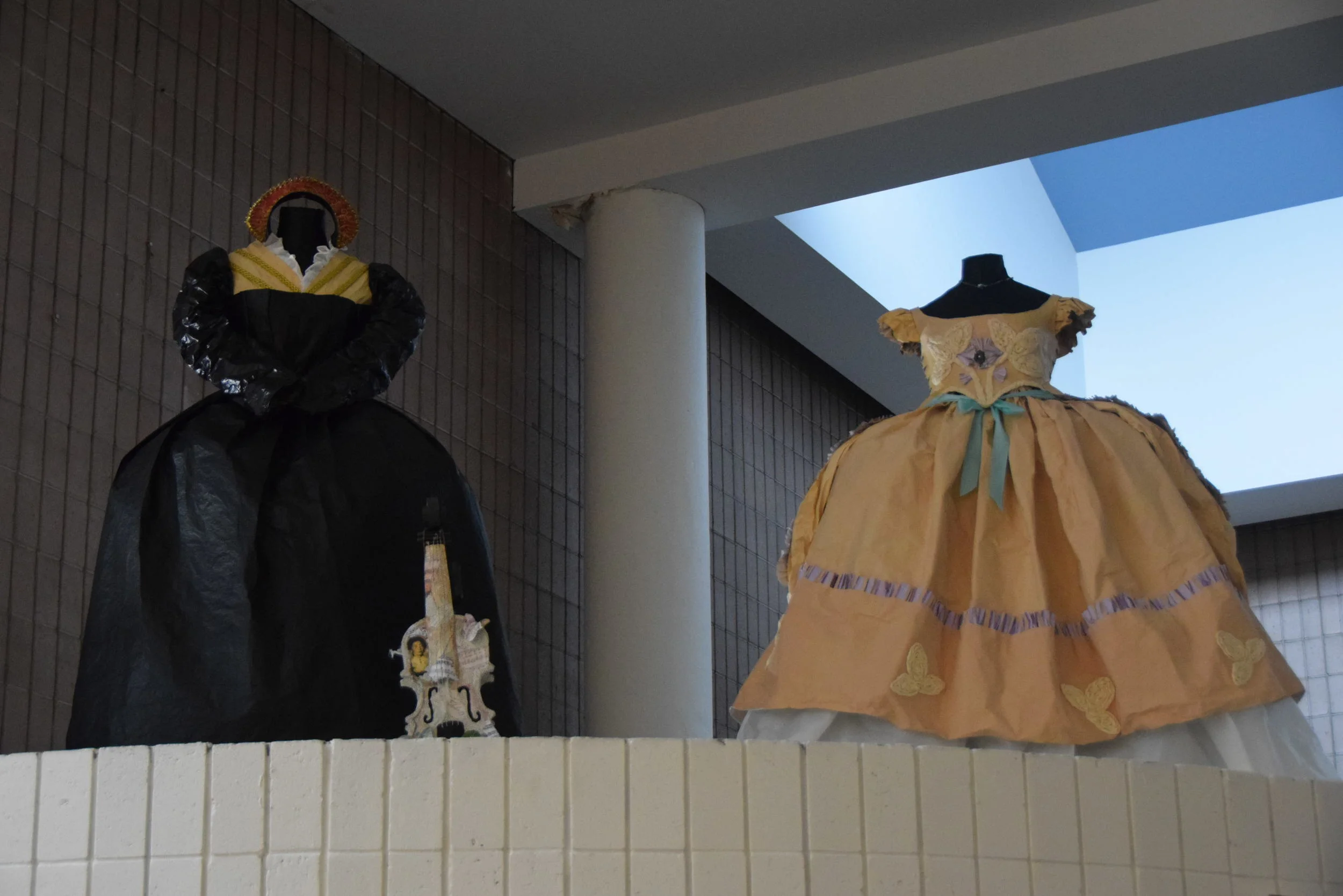I trekked up to Harlem to catch the debut show of mixed-media artist Fabiola Jean Louis, a Brooklyn-based Haitian artist that "explores the events of the past, present, and the possibilities of the future that involve her community." I'd heard great buzz about her last year during Afro Punk (which I missed) and she'd been on my radar to check out ever since. A friend put me on to her latest show, "Re-writing History: Paper Gowns and Photographs."
I was floored. Louis blends cultures and history, and highlighting women of color in a really beautiful way. Although it was a small exhibition, but I spent a good hour marveling at work. The detail, the colors, the historical references I had to Google on my phone!
Her work kind of reminds me of Kehinde Wiley in that it borrows from high art, or in this case, high fashion, of bygone eras and infuses women of color into the narrative. I strongly recommend you head up to Harlem to check out her show. It's on display until March 1.
More Info: HERE
Madame Beauvoir's Painting:
Catch how the decor on the back of her gown mimics the keloid scars on the back of the formerly enslaved man in the photograph.
I knew I'd seen the image of the man in the "painting" before, but had to look it up. It's extremely popular, now less so than during the Civil War when it was originally taken. There's a fascinating backstory:
The history of the photograph, as explained by America's Black Holocaust Museum (a valuable resource, if you're interested in learning more about Black history):
"The photograph pictures the runaway slave Gordon exposing his back to the camera of photographers, William D. McPherson and his partner, Mr. Oliver. Gordon had received a severe whipping in the fall of 1862. This beating left him with horrible welts on much of the surface of his back. While the plantation owner discharged the overseer who had carried out this vicious attack, for the next two months as Gordon recuperated in bed, he decided to escape.
In March 1863 he fled his home, heading east towards the Mississippi River. Upon learning of his flight, his master recruited several neighbors and together they chased after him with a pack of bloodhounds. Gordon had anticipated that he would be pursued and carried with him onions from the plantation, which he rubbed on his body to throw the dogs off-scent. Such resourcefulness worked, and Gordon—his clothes torn and his body covered with mud and dirt—reached the safety of Union soldiers stationed at Baton Rouge ten days later. He had traveled approximately eighty miles."
In Louis's image, the beaten man's face is partially covered by the illuminati sign. I gotta track down the artist to find out the levels of that one. Perhaps it's a nod to how the history of this popular photograph isn't told?
Back to Madame Beauvoir's, I loved the details of her black girl magic here, the loc'd hair, the strands of pearls weaved in, and her earrings.
Madame Leroy (2016):
FUN FACT: According to Louis's Instagram: she named all the "Madames" after women in her family. Madame Beauvoir is her aunt.
She's dressed in the high fashion of the 18th century, and posed in a very popular way. It took me a minute to figure out why this looked familiar. It reminded me of the movie poster for "Belle", an exceptional film based on a free-born Black woman in England's aristocracy. Give it a watch if you haven't already.
Madame Leroy (2016):
I was really struck by the beauty of this subject in this next image. She looks similar to a close friend, who is also quite gorgeous. I also loved the detail of the jewelry and the dress, especially those ruffles. But what really stands out in the photo is the bodice. Where there would typically be more ruffles, there's an image of a chained Black man hanging from a a climbing rose vine.
Also, if you look closely, you'll see that that there's newsprint on the dress. I'll explain further down. Oh, and Leroy is Louis's mother's maiden name.
Madame Beauvoir, The Color Purple:
I loved everything at the exhibition, but the grace and elegance emanating from this image just floored me. It's entitled "The Color Purple". The title and lilacs in her hand are surely a nod to Alice Walker's award wining book, particularly this part:
"I think it pisses God off if you walk by the color purple in a field somewhere and don't notice it. People think pleasing God is all God cares about. But any fool living in the world can see it always trying to please us back." ― Alice Walker, The Color Purple
Catch the details:
Passing:
The title of the image immediately made me think of Nella Larsen's book of the same title, but I suppose the practice, of a Black person portraying a white person for social and economic advantage, was around long before-- and after-- Larsen.
In two of the images below, look at the violin. There's an image of a Black woman in a Victorian era Black dress. It was driving me crazy trying to figure out who she was. I thought it might be abolitionist Ida B. Wells, but Google determined that was a lie. LOL.
But I HAD to know, because I'm nerdy like that. So at 2AM-- because it took me forever to search-- I finally cut this photo down to just the woman's head and do a Google image search! Voila!
According to the GeorgiaWomen.Org (another great resource), the woman is Mathilde (later spelled Mathilda) Taylor born on November 14, 1832 in New Orleans, to Caroline, a slave owned by James C. Taylor. It was speculated that her father was Native American.
"There is no record of how she achieved her freedom to move to Savannah as a young woman. But by 1859, records indicate that she had been operating a secret school for African-American children at a time in history when “punishment for teaching slaves or free person of color to read” was a “fine and whipping.
"In the 1880s, Mathilda went to England to train as a Catholic nun. Upon her return to Savannah she became known as Mother Mathilda, and later Mother Beasley, and Georgia’s first African-American nun. Mother Mathilda donated her husband’s estate to the Sacred Heart Catholic Church of Savannah in order to establish an orphanage, the St. Francis Home for Colored Orphans, the first facility of its kind for African-American girls.
"Mother Mathilda founded the Third Order of St. Francis in 1889, Georgia’s first group of black nuns. She operated the orphanage until her death at age 71 on Dec. 20, 1903, when she was found in her private chapel with hands clasped and stretched towards a statue of the Blessed Virgin and her shroud and burial garments folded neatly with her last will and testament placed on top."
Conquistador (img 2):
I loved the eyes, so defiant and confident.
This part of the exhibit blew me away. These dress sculptures are made from paper. Remember higher up when I pointed out the newspaper print on the dress worn on Madame Leory? Well, it is in fact, newspaper. Louis re-created four of the dresses worn by her subjects. (She studied fashion and design illustration at the High School of Fashion Industries and attended the Art Institute of Pittsburgh.)
Check em out:








